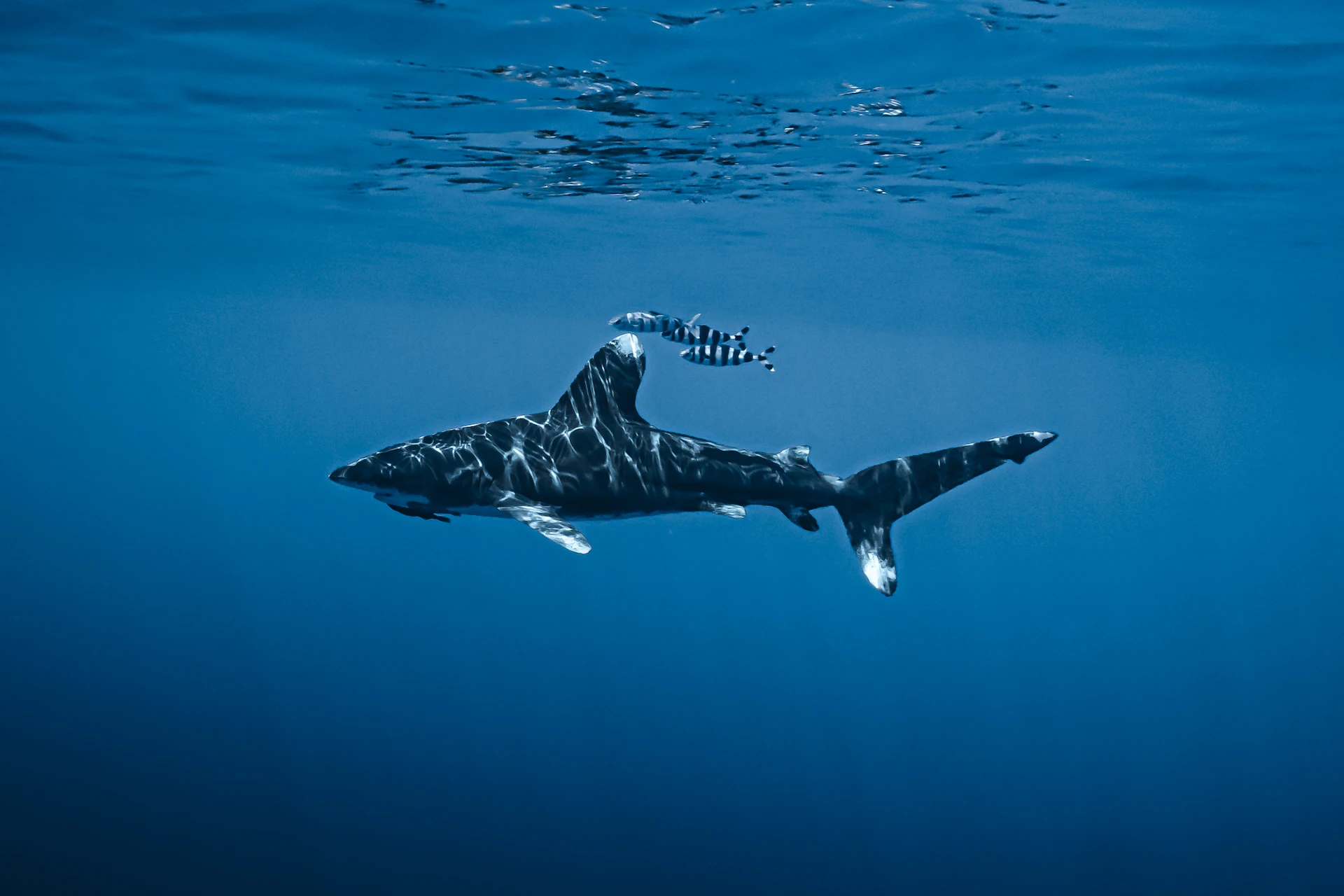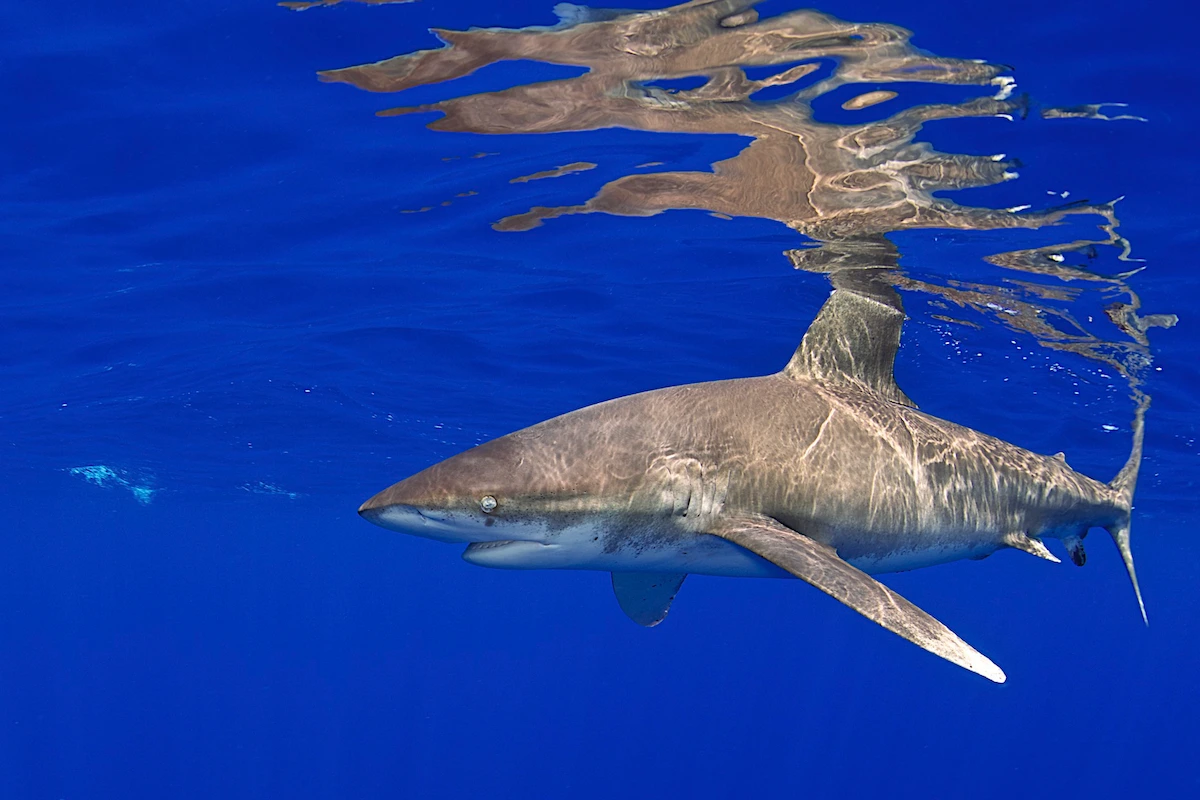The Truth About Oceanic Whitetip Sharks
Meet one of the most endangered sharks in the world

Have you ever heard of an oceanic whitetip shark? While this species may not be the most famous of all sharks, these sharks can be found in almost every ocean, making them among the most widespread of all shark species. Named for the white, stippled appearance at the tips of their rounded dorsal and pectoral fins, these sharks’ body color depends largely on what part of the world they reside in. They can appear anywhere from a grayish bronze to brown, and some individuals may have a yellowish tint to their bellies. These are also not small sharks: They can grow to be more than 11 feet long, and the heaviest individual ever recorded weighed a whopping 370 pounds.
While they may not be as well-known as other shark species, there are some things about oceanic whitetips that are unbelievably fascinating.
Get Ocean Updates in Your Inbox
Sign up with your email and never miss an update.
They need to be on the move—literally.
Some shark species can pump water over their gills … oceanic whitetip sharks aren’t in that club. In order to get the oxygen they need, they must constantly keep moving to physically push seawater over their gills. If they stop moving, they literally can’t breathe.
They love wide open spaces.
These sharks are usually found in deep water far offshore, spending most of their time in the uppermost water column. They’ve been known to dive into deep water up to more than 3,000 feet below surface level, but since they prefer waters warmer than 68° F, they tend to stick closer to the surface most of the time.
They are aggressive, opportunistic hunters.
Because oceanic whitetip sharks spend so much of their time moving through open water, their meals can be few and far between, so they’ll take a shot at any food they can get. They usually hunt large bony fish like tuna and marlin, as well as octopus, squid, sea birds and even some smaller shark species. Unfortunately, their drive to eat anything and everything they can get their jaws on means they’ve also been known to eat marine debris and trash in the ocean thinking that it’s food, obviously not good for them.
Yes, they’ve attacked humans … but only in very specific, rare circumstances.
Because these sharks reside primarily in the open ocean, you’re very unlikely to bump into one while taking a dip at your local beach (unless your primary occupation or hobbies take you out to open waters on a regular basis). However, there’s one event in history that these driven hunters are notoriously tied to.
In 1945, the USS Indianapolis sunk after being hit by two torpedoes in the Pacific Ocean while enroute from Guam to the Philippines. About 900 crewmen were stranded in open water for more than three days before the first rescue operations team made it to them. Only 317 of those 900 survived. While many lost their lives due to dehydration and traumatic injuries, estimates of those that died from shark attacks range from 30 to 150. Because of oceanic whitetip sharks’ primary distribution in open water, as well as their opportunistic hunting nature, it is assumed most of these interactions involved this species.

They have some truly mesmerizing courtship rituals.
For years, scientists have been trying to figure out exactly where and how these sharks usually breed and give birth. They’re also trying to decode why oceanic whitetip sharks tend to congregate in a very specific area of the Bahamas. In 2019, an OceanX research team took a captivating video of the curious mating behavior of two oceanic whitetips, showing the sharks engaging in a complex series of behaviors including parallel swimming, biting and nosing, among others. While this description may sound simple, the video becomes truly compelling when viewers are aware of the fact that so little is known about the species’ mysterious courtship demonstrations.
They’ve been known to hang out pretty frequently with pilot whales.
While we’re on the topic of curious behaviors, we couldn’t go without mentioning that oceanic whitetip sharks have been seen alongside species such as pilot whales. In Hawaii, they’re sometimes found swimming with pods of shortfin pilot whales which were following them both near the surface and during dives to deep water. While scientists don’t know the exact reason these sharks carry out this behavior, the most prevalent theory is that pilot whales are excellent at tracking down prey that the sharks love, such as squid.
They need our help—desperately.
While oceanic whitetip sharks were once among the most abundant shark species in our ocean, populations around the world have decreased dramatically in recent years. The International Union for the Conservation of Nature (IUCN) currently lists oceanic whitetip sharks as Critically Endangered (the highest vulnerability ranking possible before extinction).
Because oceanic whitetip sharks are most often found near the ocean’s surface in warm waters, the species has a very high chance of encountering commercial fishing gear and are caught in large numbers as bycatch. They are also intentionally harvested in some regions for the shark fin, skin and oil trades. Oceanic whitetips, like many sharks, take a long time to reach sexual maturity and produce only a few young at a time, meaning their populations rebuild very slowly.
Global protection and smart management are crucial to rebuild this species’ populations. Losing a top predator like the oceanic whitetip shark can disrupt the delicate balance of food chains that keep our ocean healthy and thriving. Take action today with Ocean Conservancy to help protect endangered and threatened species like the oceanic whitetip shark.